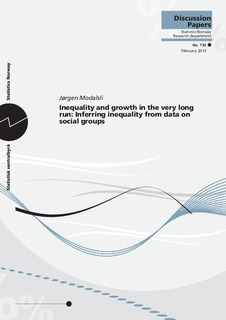| dc.description.abstract | This paper presents a new method for calculating Gini coefficients from tabulations of the mean income of social classes. Income distribution data from before the Industrial Revolution usually come in the form of such tabulations, called social tables. Inequality indices generated from social tables are frequently calculated without adjusting for within-group income dispersion, leading to a systematic downward bias in the reporting of pre-industrial inequality. The correction method presented in this paper is applied to an existing collection of twenty-five social tables, from Rome in AD 1 to India in 1947. The corrections, using a variety of assumptions on within-group dispersion, lead to substantial increases in the Gini coefficients. Combining the inequality levels with data on GDP suggests a positive relationship between income inequality and economic growth. This supports earlier proposals, based on fewer data points, of a “super Kuznets curve” of increasing inequality over the entire pre-industrial period. | nb_NO |
